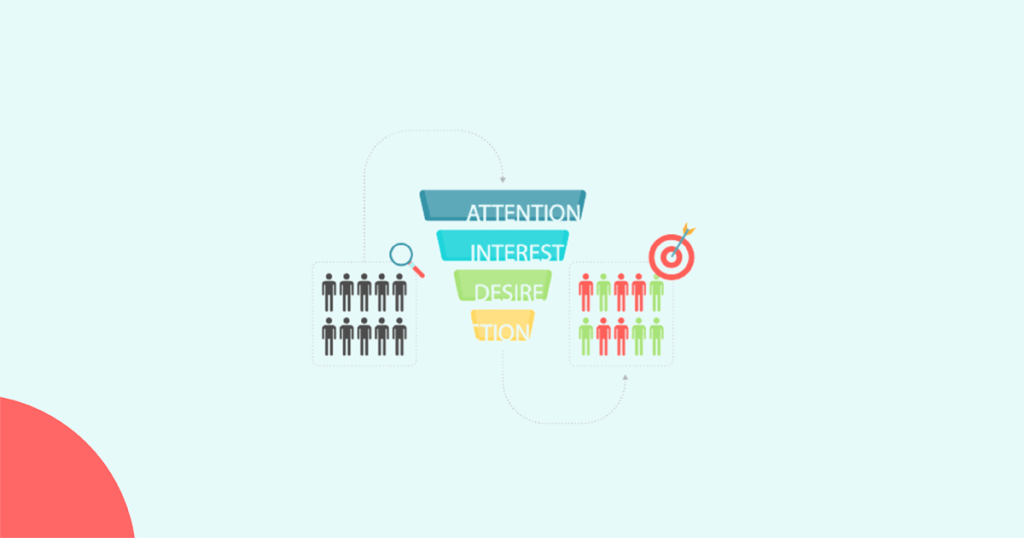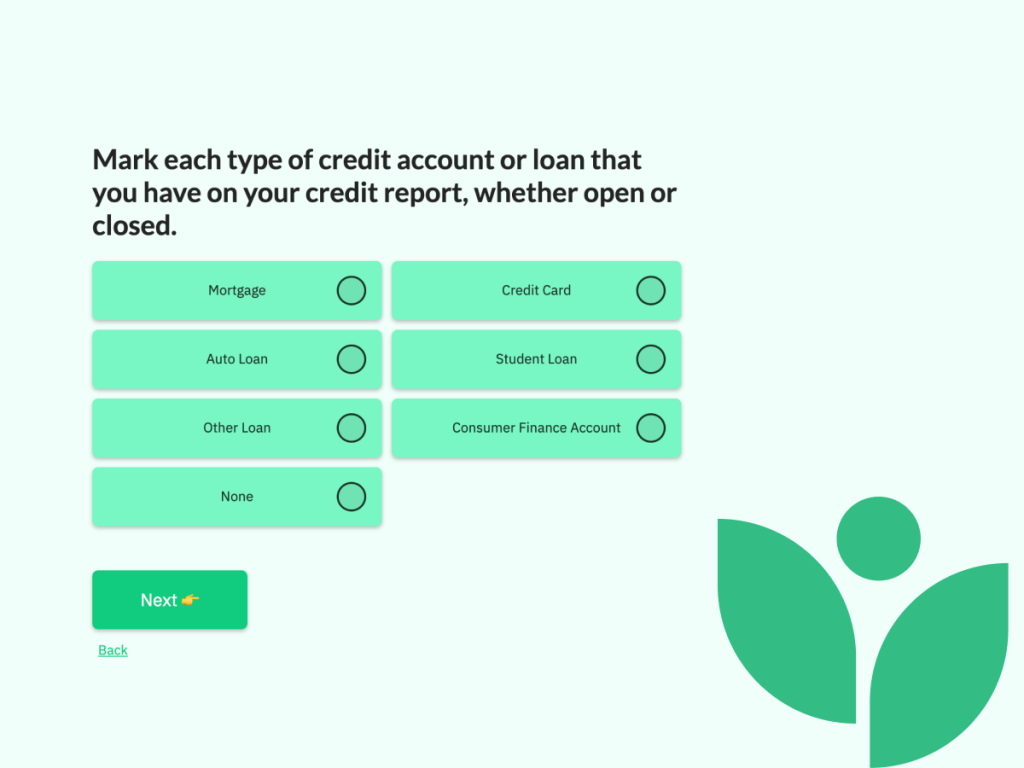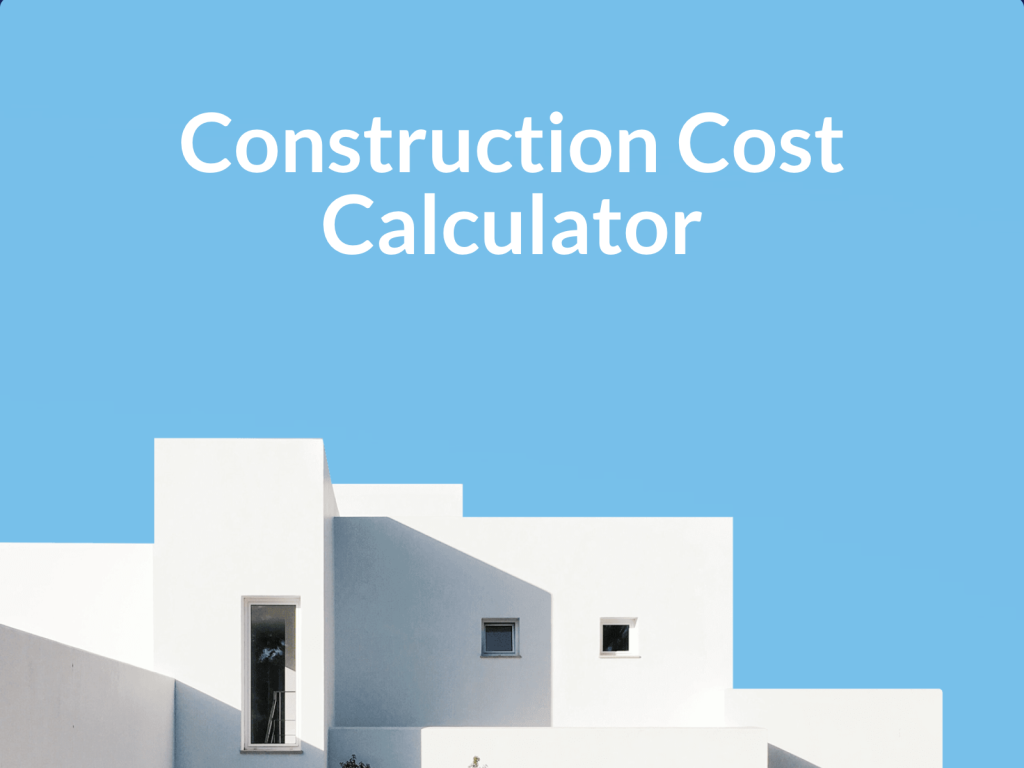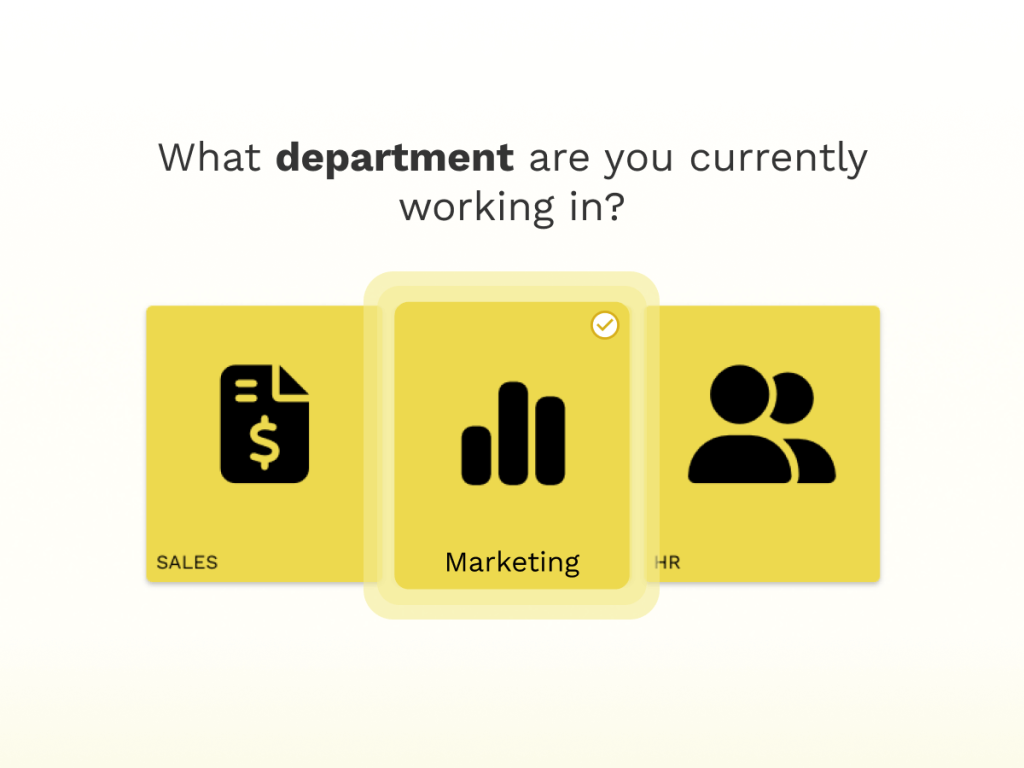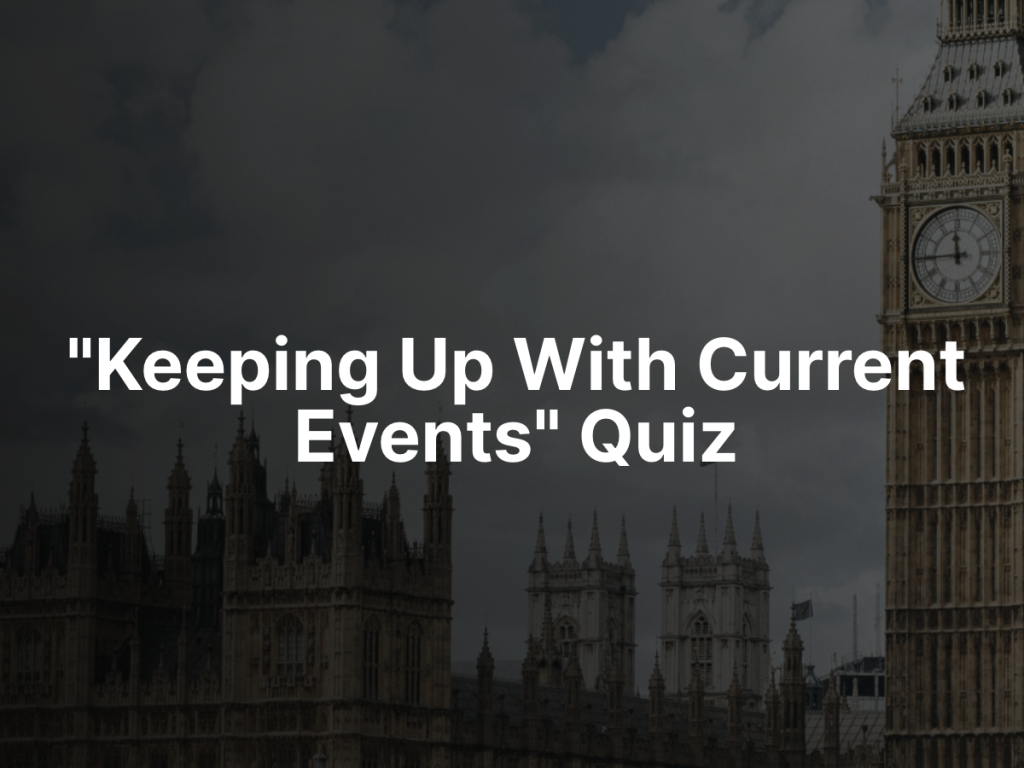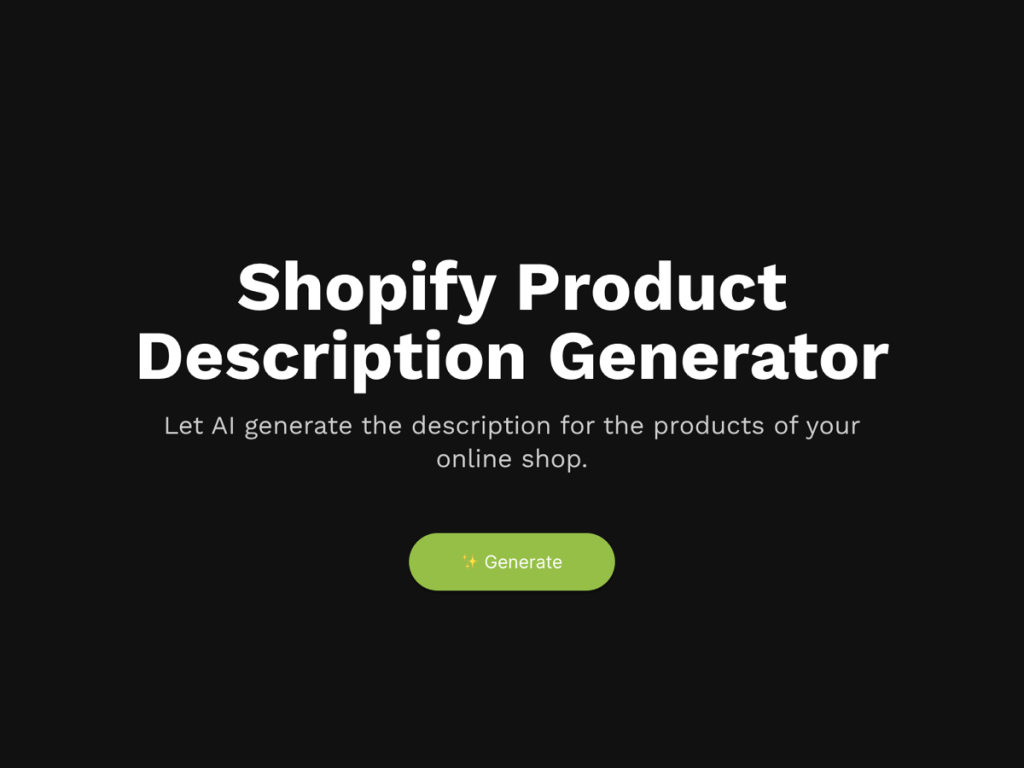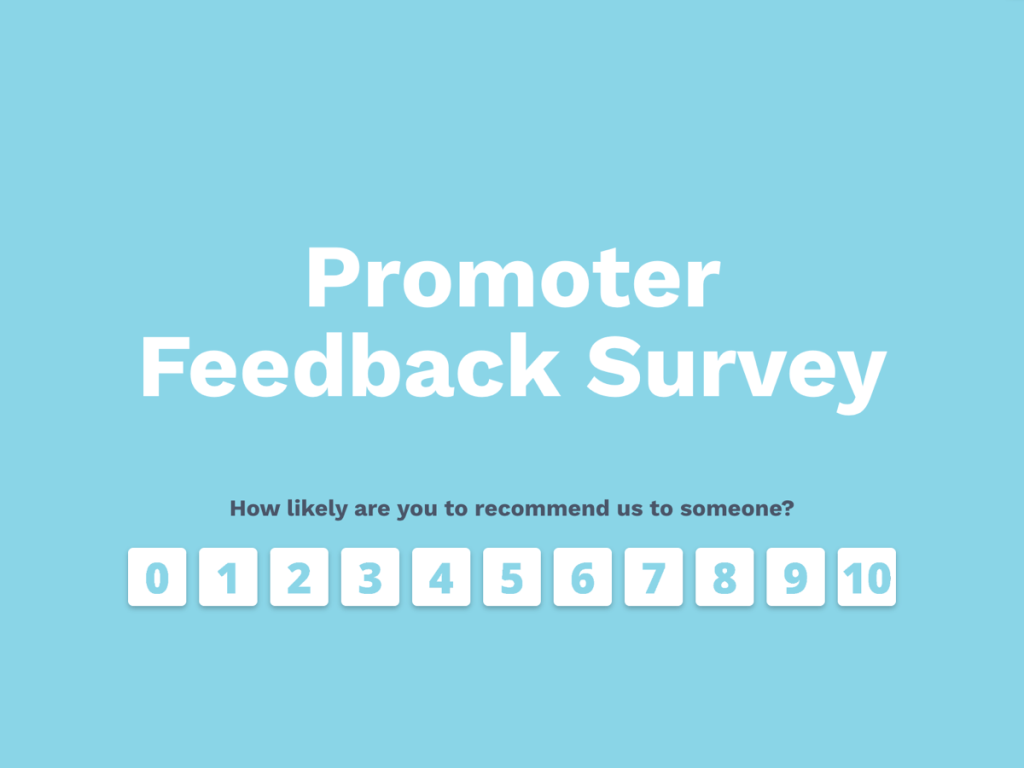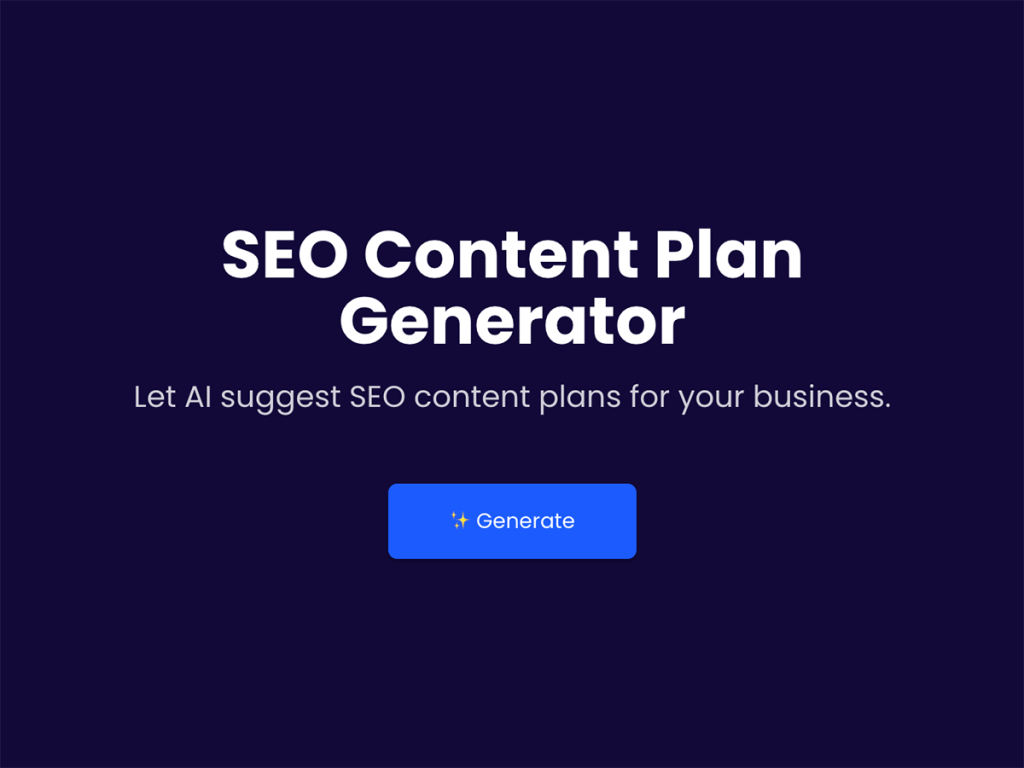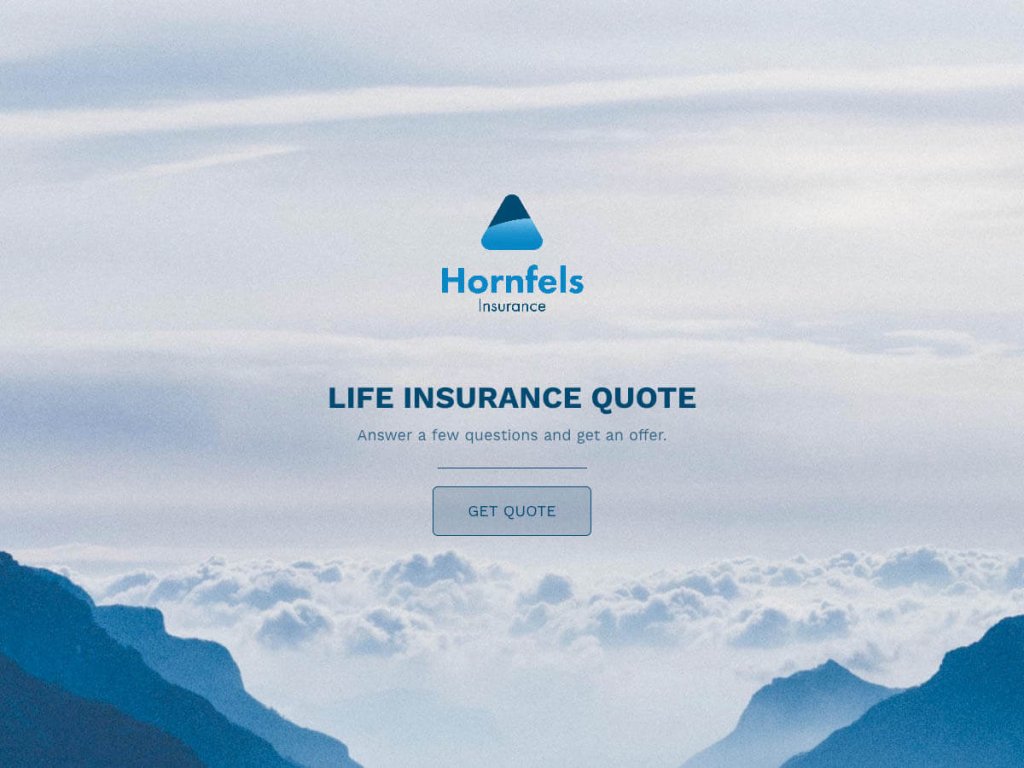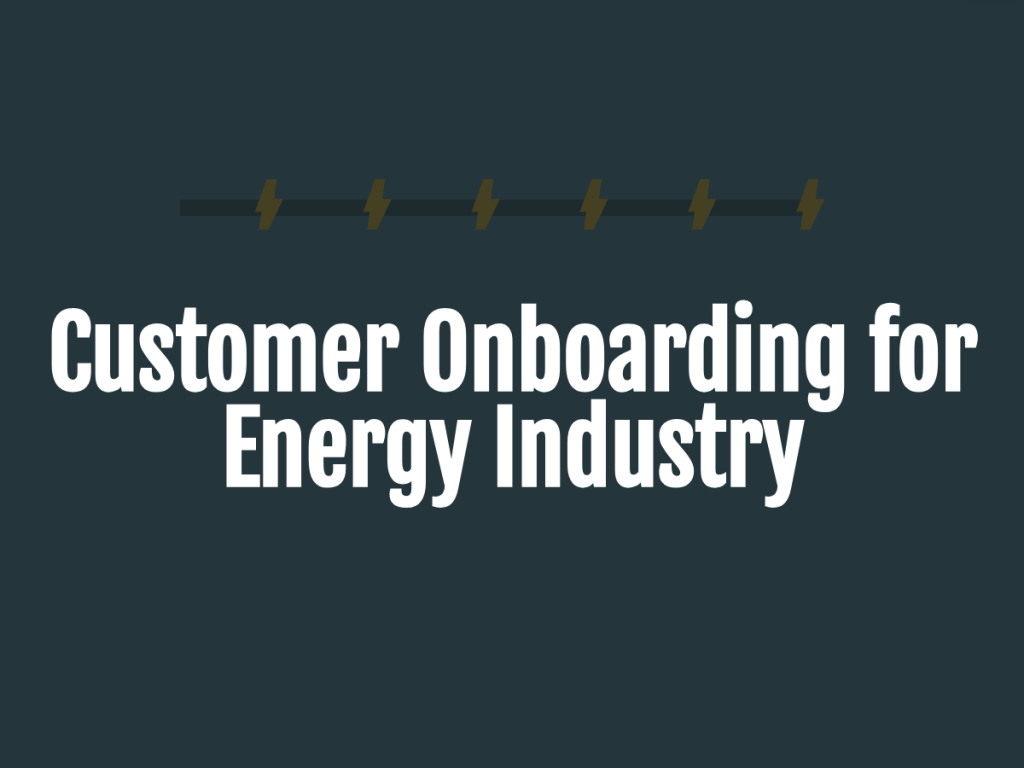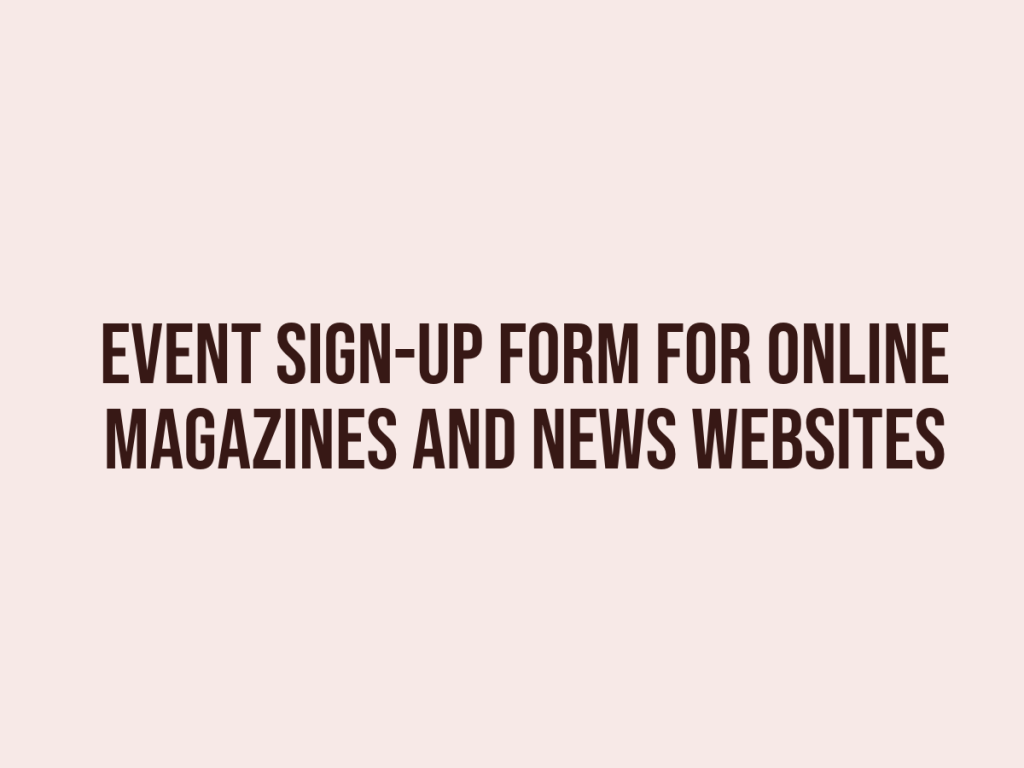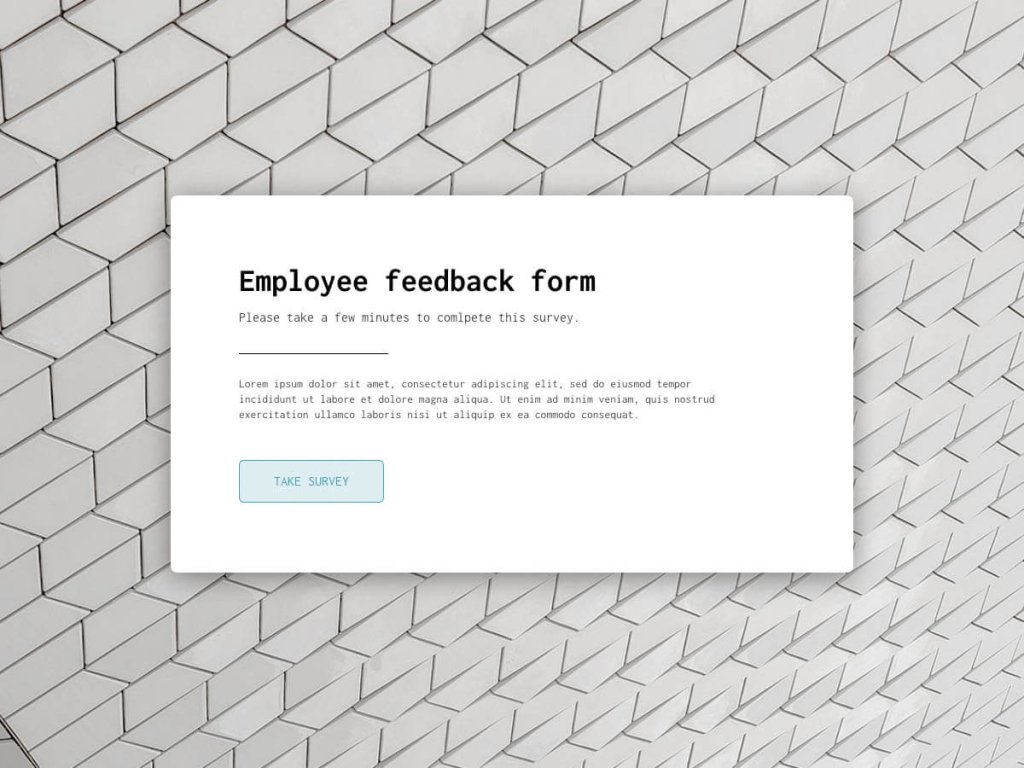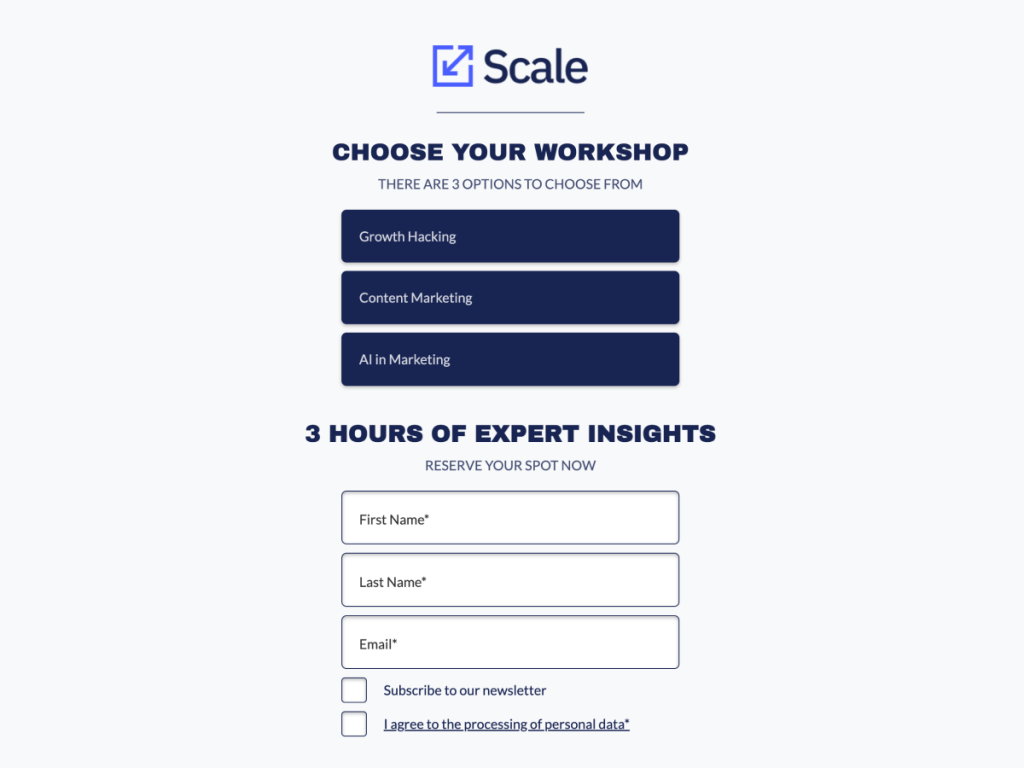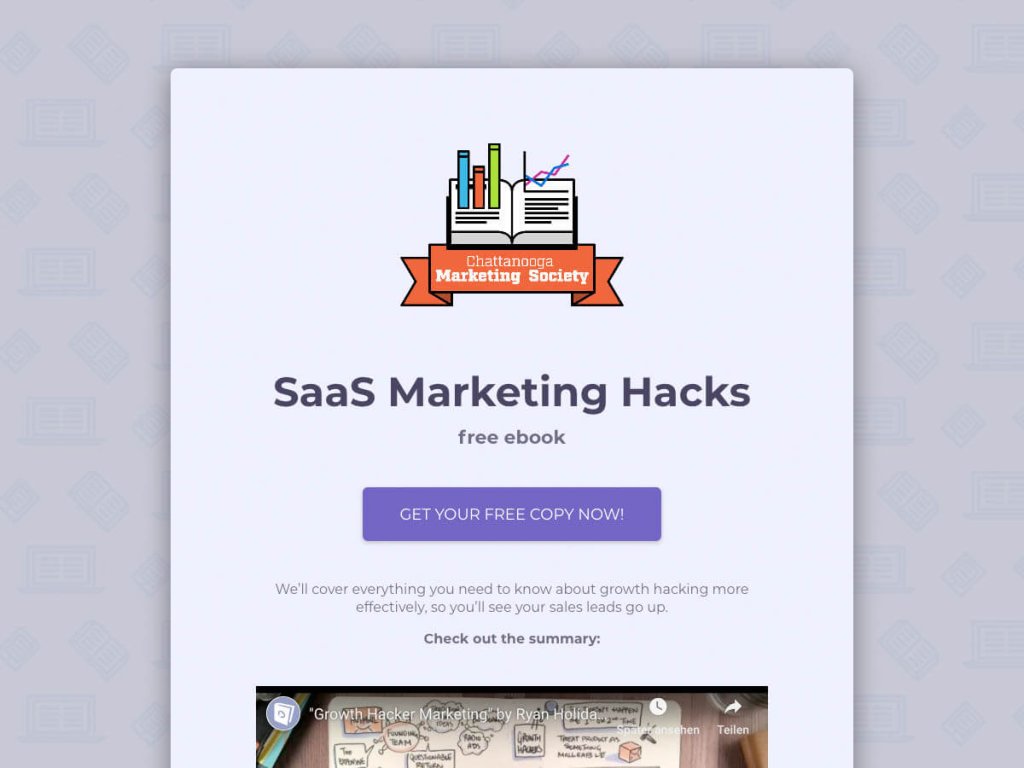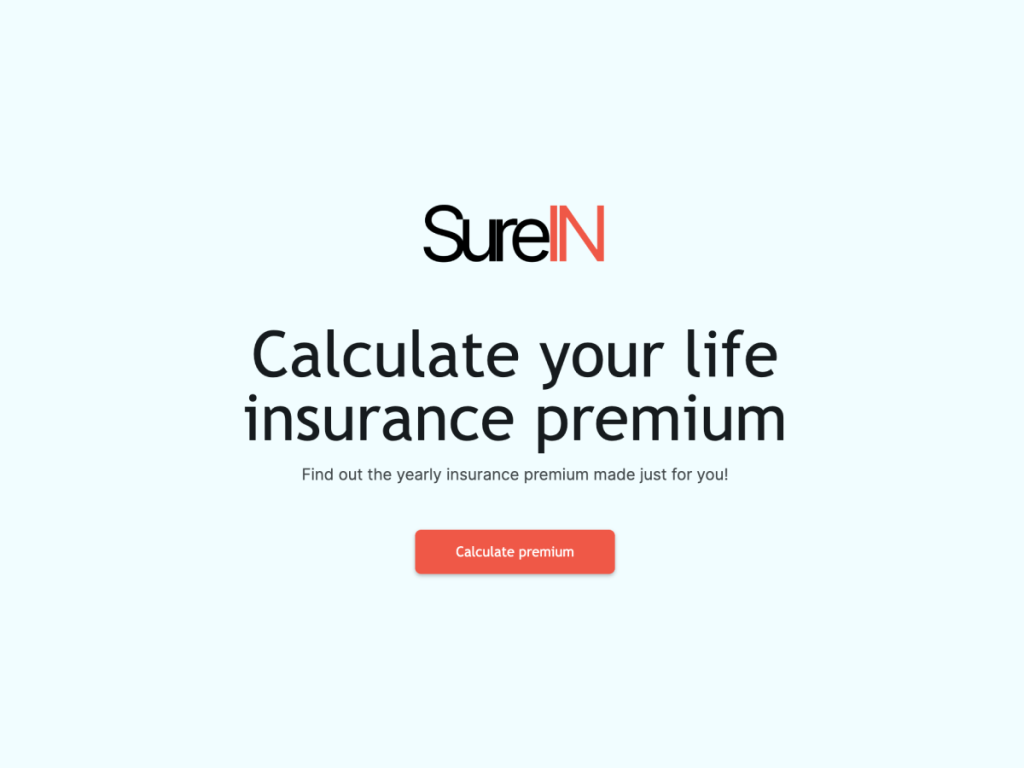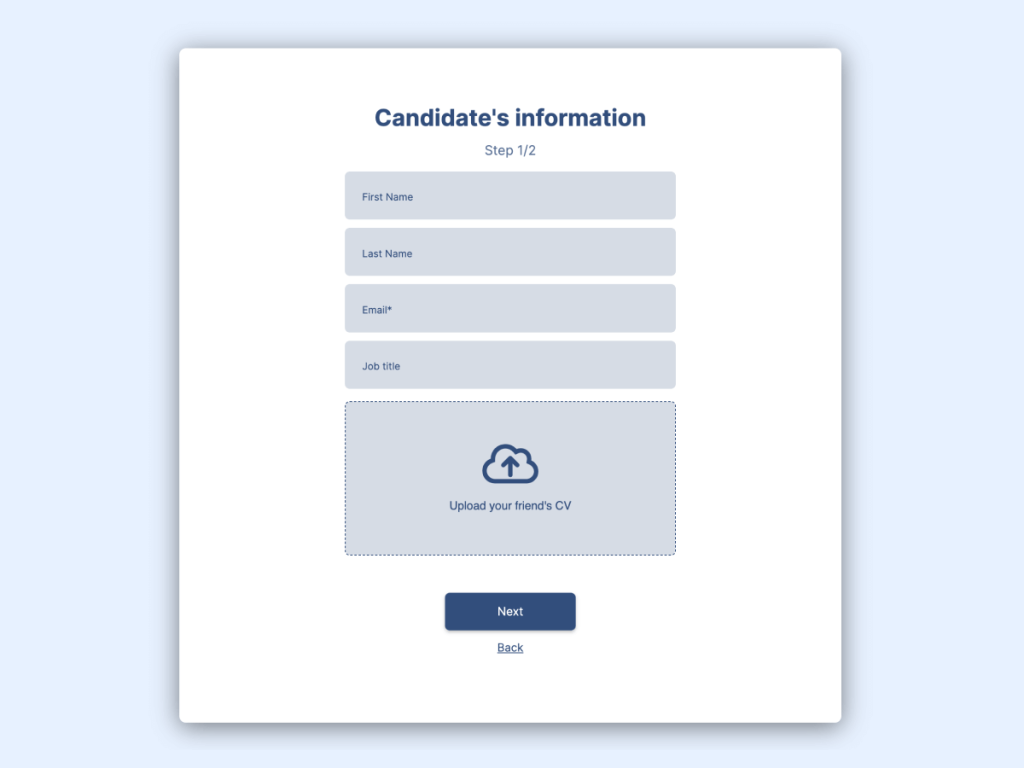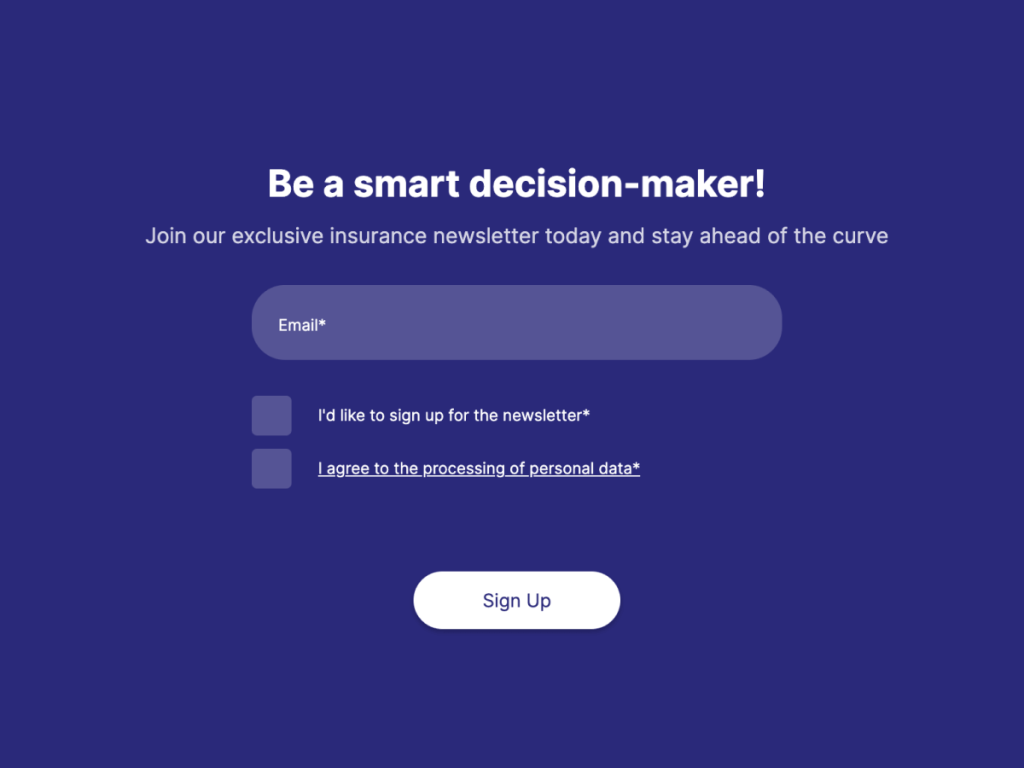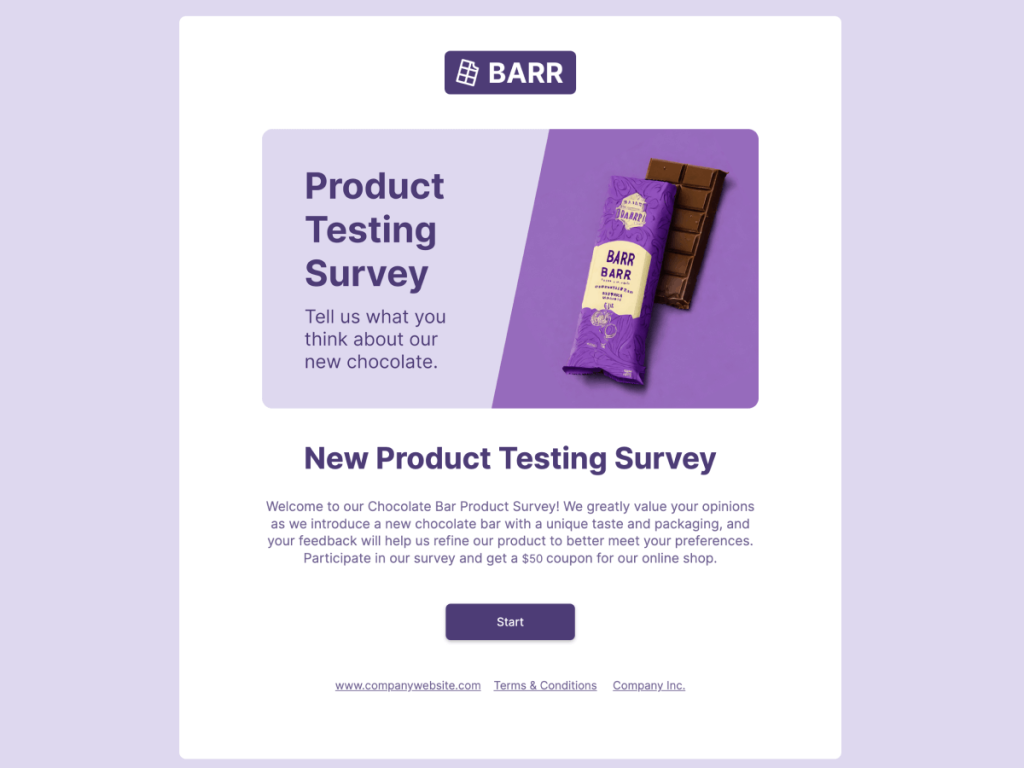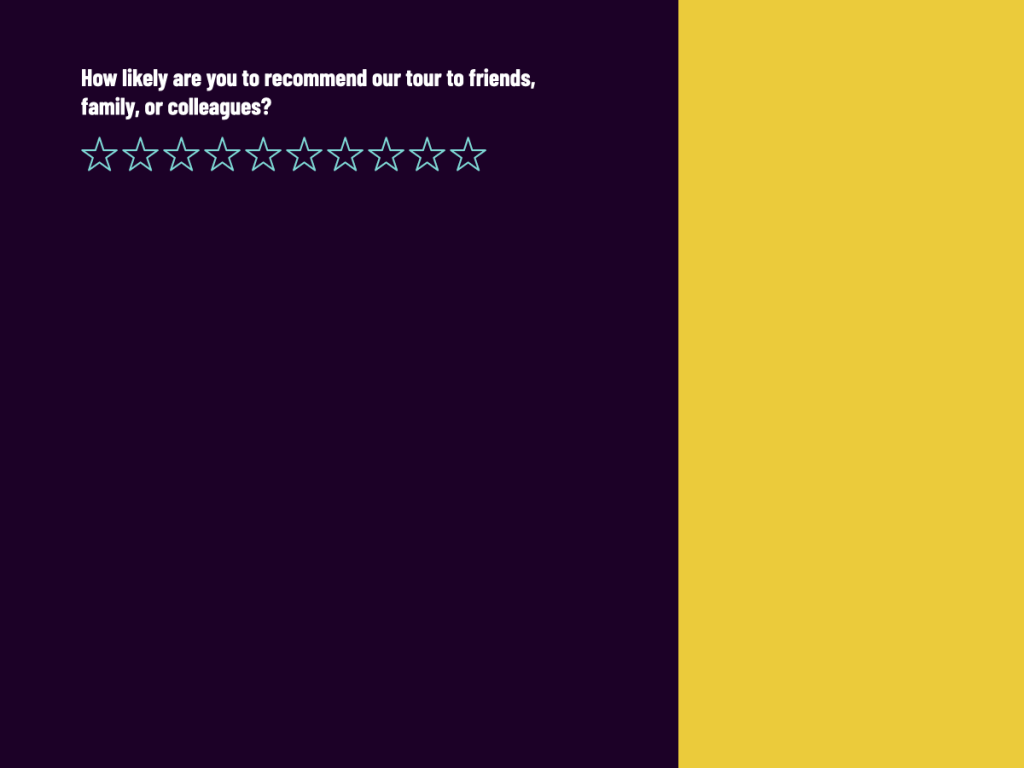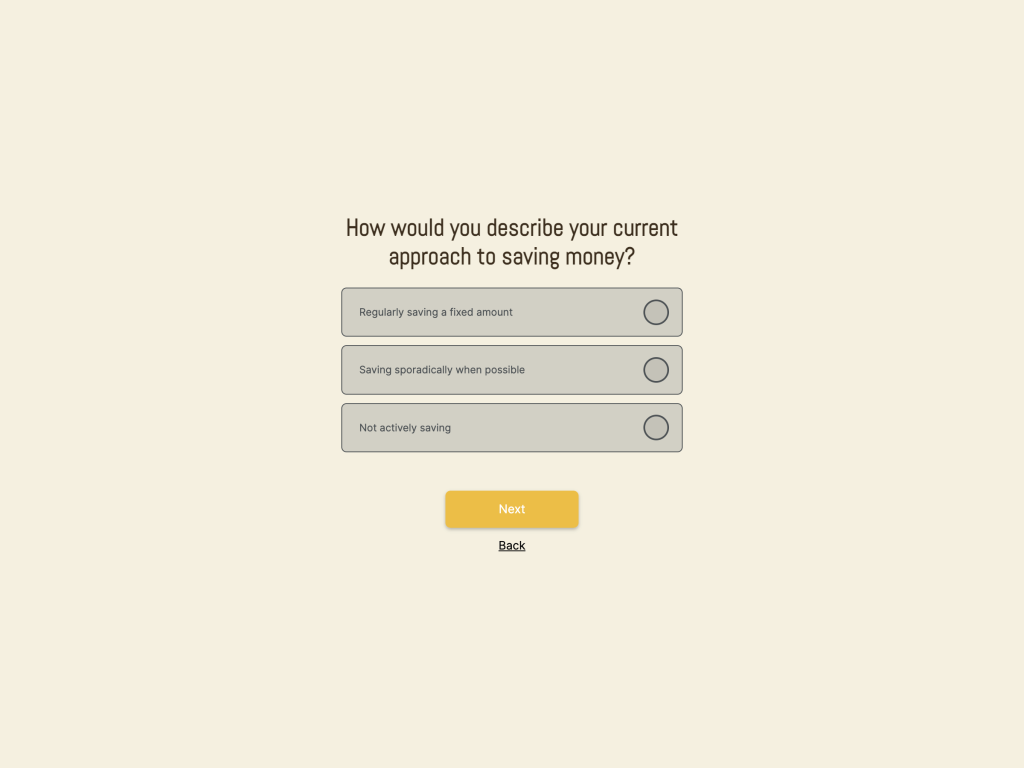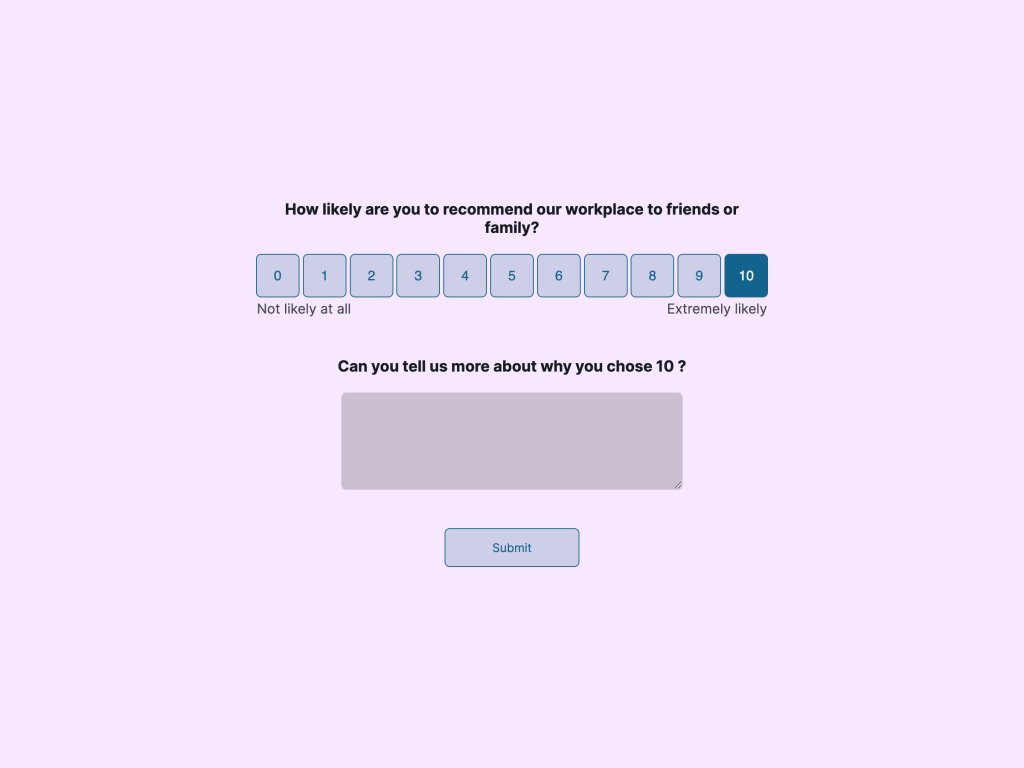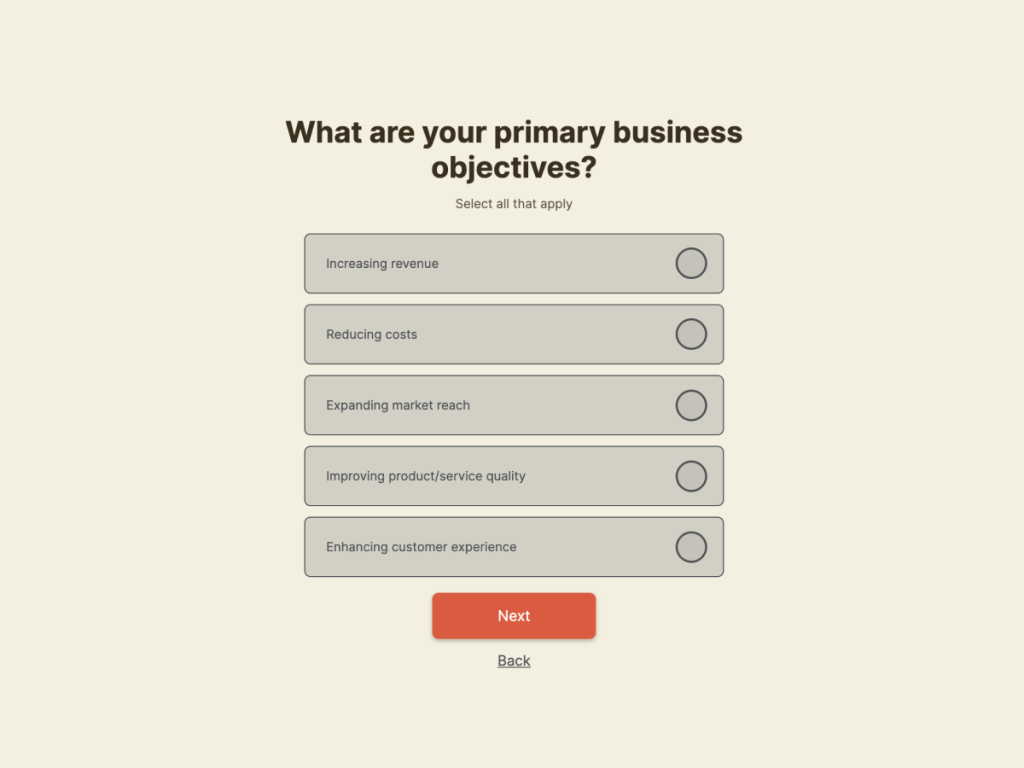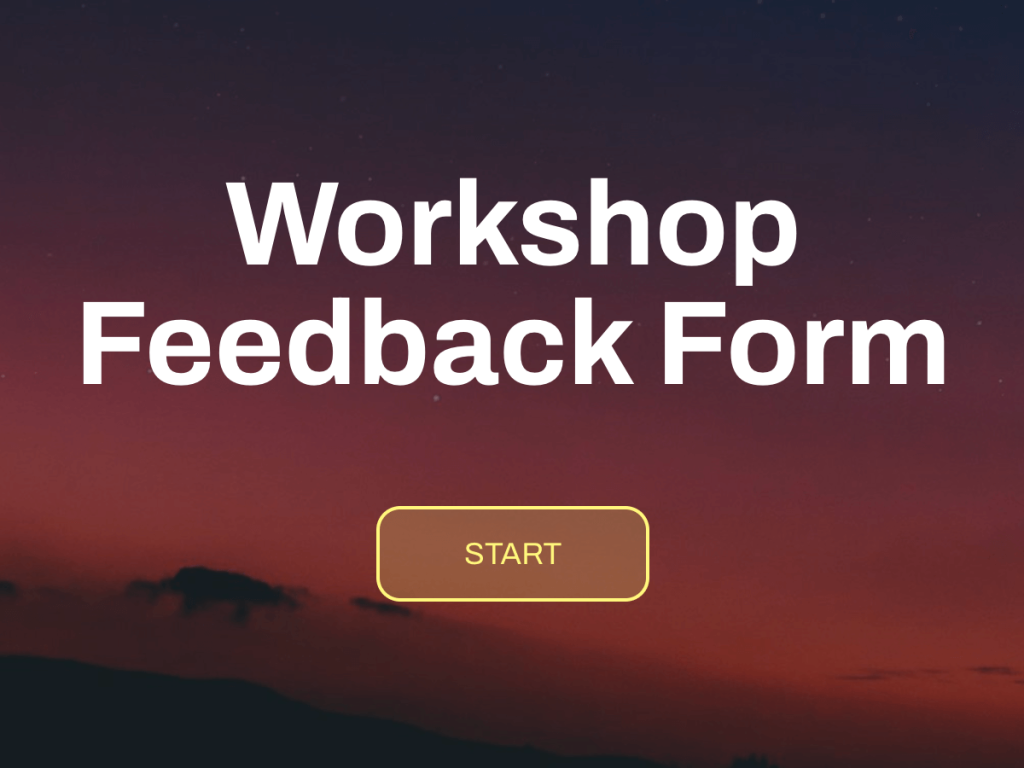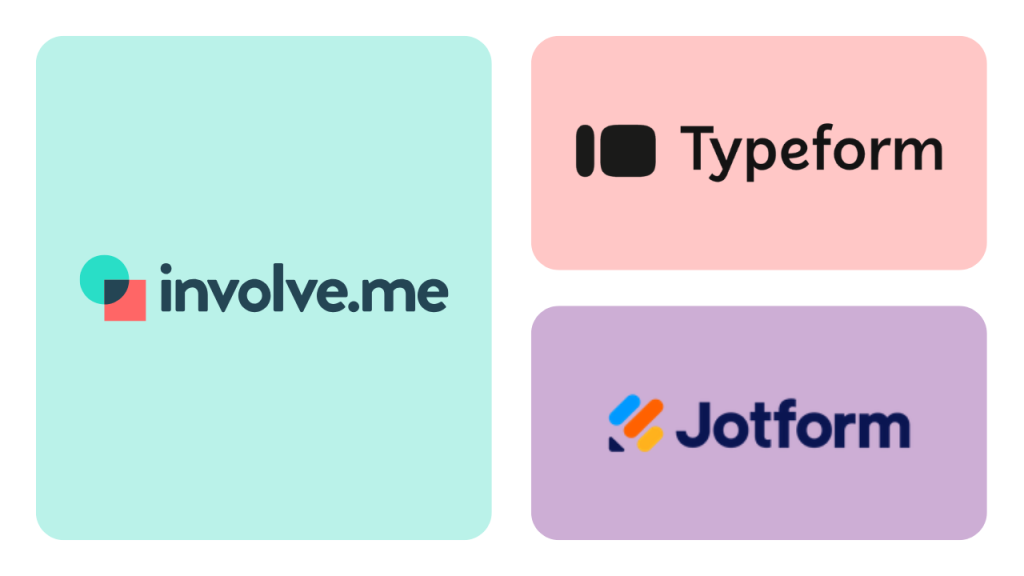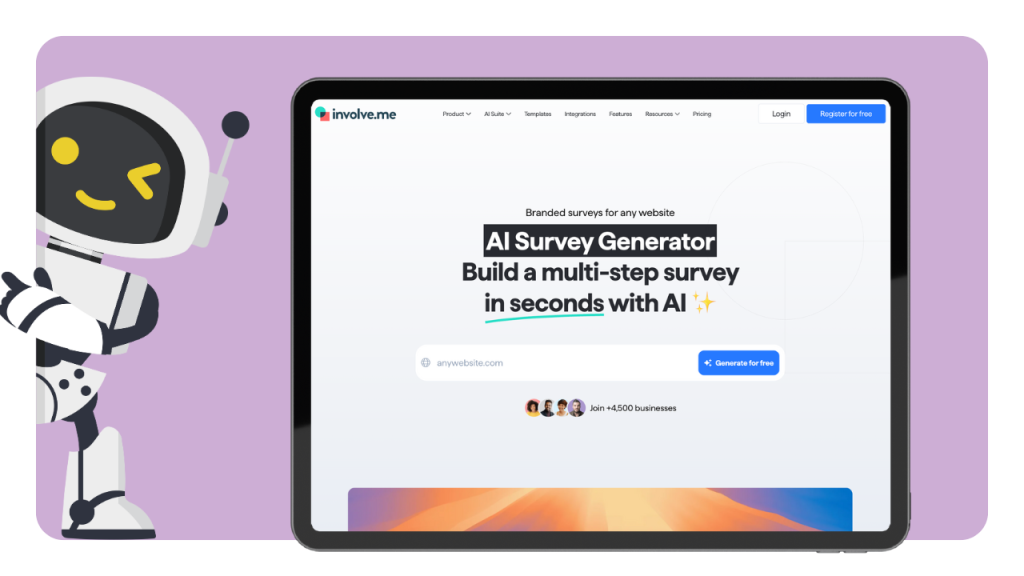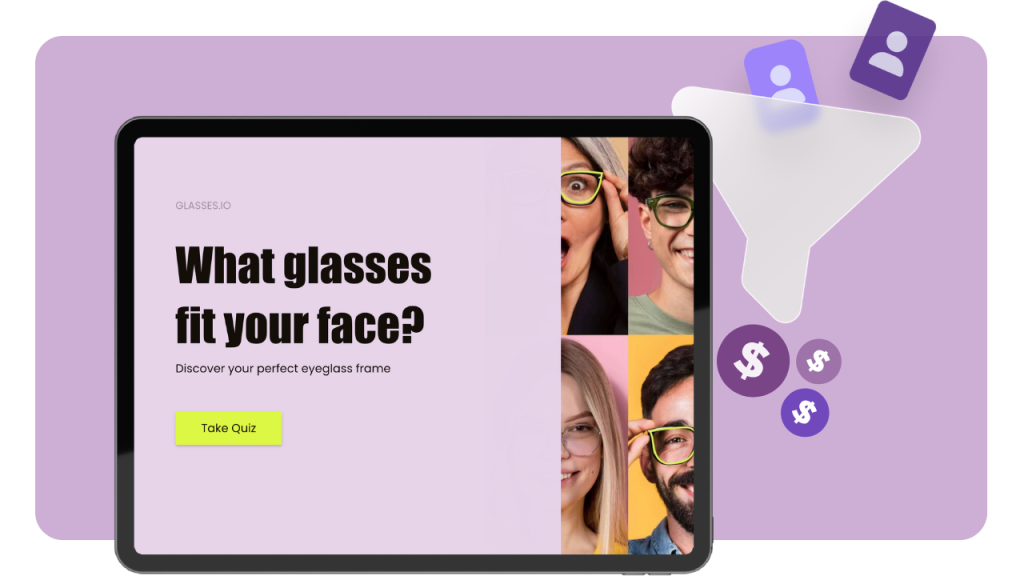Every sales cycle can and should be automated and made more efficient with funnels. Sales funnels guide your audience through the decision making and learning process that leads to them becoming customers. Knowing what funnel to choose and perfect is crucial for getting more customers.
What’s a Sales Funnel?
A sales funnel is the journey from website visitor to loyal customer. It includes every step between not knowing that your business exists and ceaselessly promoting it through word of mouth.
Building sales funnels is an art in itself. A well thought out sales funnel will help you build trust, connections, and conversations with your customers, which will ultimately result in more sales.
Sales funnels are as varied as your customers. Some people purchase instantly, some take weeks or even months to decide. Some customers need many “touches”: sales calls, emails, video webinars, and blog articles in order for them to trust and understand your business.
Building the best sales funnel for your business can be overwhelming because a sales funnel essentially is your whole business. When starting to look into implementing a sales funnel or changing your existing one, it’s a good idea to pick one type of funnel that will tackle a single challenge.
To identify funnel types, we need to identify challenges. What are the most common challenges businesses face today?
Getting leads organically - through blog posts, animated content and social media for example
Getting leads from paid channels - Google Ads, social media ads
Booking sales calls
Filling webinar and online event rooms
Getting reviews
Identifying payment patterns
Identifying what causes customers to leave
The following funnel types are sales-generating templates designed to help you create clear pathways towards creating paying customers.
1. Lead Generation Funnel
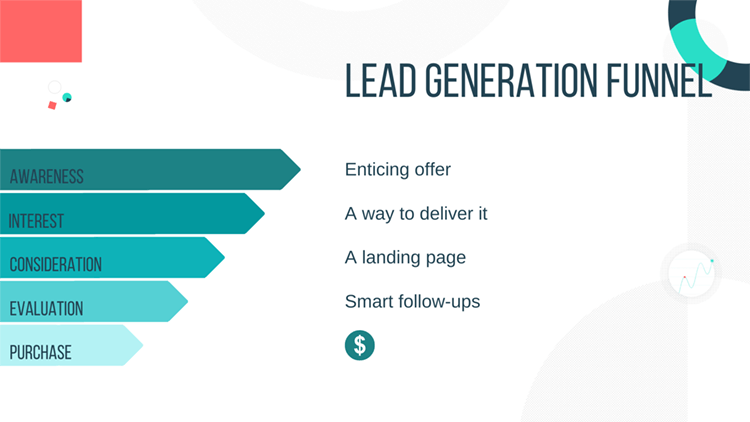
Goal: Get more leads from your ads
Superpower: More leads for the same budget
The purpose of this funnel is clear and simple: get leads. This can mean growing your email list, building up an audience for a new product or an event. Read this article to learn how to actually build a funnel from scratch.
There are countless ways to get leads. We can split them into two categories: organic and paid.
Organic channels include all the free ways to get leads like website traffic, word of mouth, and social media. We’ll cover those more in-depth as we explore more funnel types further down this list.
Paid channels are anything you pay for to get some eyeballs on what you’re selling. Practically speaking, this includes mostly ads.
To Construct Lead Generation Funnel, You’ll Need:
☑ An offer that’s almost too good to be true
This can be a free template download, a time-restricted discount, or a free trial. If it fits your business model, lead generation calculators (like What's your BMI?, How bad is your credit score? or How much would it cost to install solar panels on your roof?) and product quizzes (What glasses fit your face-shape?, Make your own Italian shirt or The perfect sneaker) are a great lead magnet.
☑ A Way to Deliver Your Offer to Your Audience
Like an ad, a blog article, or a social media post. You have a website, emeding your lead magnet in a high visibility spot - like all the way up with a big, bright button - will help you convert traffic into free leads. Alternatively, you can embed your funnel as a pop-up across your website to grab your audience's attention.
☑ A Landing Page That Shows off Your Offer
Including videos, testimonials, and timers is the way to go. Whatever you include, make sure it underlines your message instead of distracting from it - keep it relevant.
☑ A Set of Emails You Send to Follow Up on People Who Don’t Claim the Offer
Some people will make a purchase instantly, but most need more: more information, more touch-points to gain more confidence in their purchase decision. If you want to get real fancy, you can let your leads adjust their email frequency - this way people can opt out of daily emails instead of unsubscribing completely.
Get Started: Make A Lead Generation Quiz
Using One Of Our 300+ Templates
2. Content Funnel
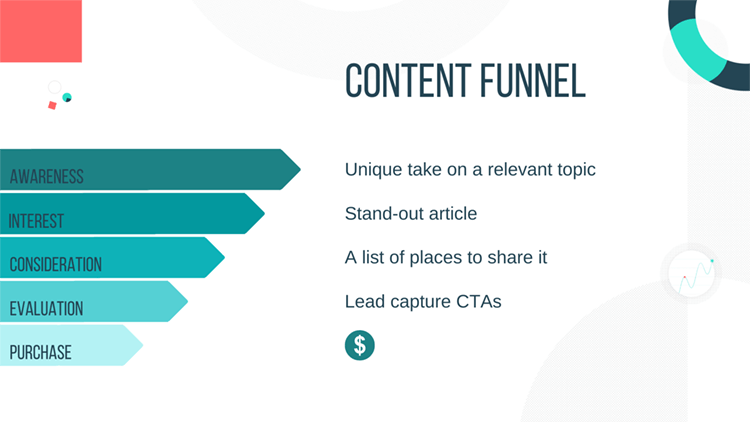
Goal: Generate inbound traffic, leads, and sales through organic content
Superpower: Getting free sales while you sleep
It’s one thing to write good content, but promoting it is a whole new beast for you to slay. You know your work is good and brings value to your target persona, you are sure they’d love the article/video/webinar if they got their eyes on it.
How do you get eyeballs on your content? Creating a content funnel starts before you create your content. Doing research on each topic and concept before you start working on it will give you an idea of what you’re competing with.
To Construct Content Funnel, You’ll Need:
☑ A Topic Your Target Audience is into That’s Not Too Overused
Think about what they’re struggles and challenges are and address them
☑ An Article on the Topic That’s Better Than the Other Ones
A quick google search will help you find outdated and underworked articles you can easily outrank with a bit of extra effort and ✨flavor✨
☑ A List of Places to Share Your Article
If you want to keep this 100% inbound and free, share your articles in relevant social media groups, Reddit, or slack channels. If you need a shortcut and have the budget for it, you can always make an ad.
☑ Lead Capture Calls-to-actions Sprinkled Throughout Your Content
Add buttons, email gated quizzes and calculators, or webinar invitations into your content. Make it easy for people who want to stick around to leave their contact information.
3. Webinar Sign Up Funnel
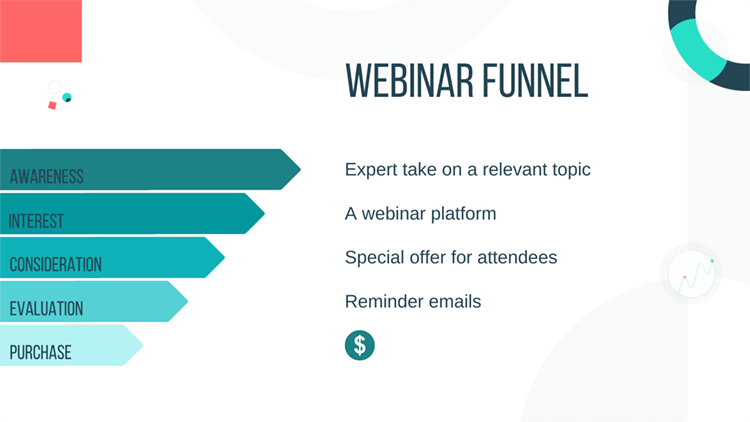
Goal: Get people to sign up for your webinar
Superpower: Maximising the reach and impact of your content
If you’re thinking about using this funnel, you’re probably already using webinar software where you’re live or automated webinar takes place. If not and you need a hand looking for one, you can check out our compact lead generation tool list.
Webinars are a rightfully popular way to connect with your audience and showcase and explain what your business can do for them. But creating an awesome, helpful, engaging webinar and getting people to sign up for it are two completely different skills rarely possessed by one person.
A webinar sign-up funnel needs to be built with a clear vision and intention, helping you get the most out of your webinar time investment.
To Construct Webinar Sign Up Funnel, You’ll Need:
☑ A Topic You’re an Expert on
Take everything you know about a topic, see what would be most useful to your target persona and serve it to them in a digestible way. You can make a PowerPoint to make your points visual.
☑ A Platform to Run Your Webinar on
Is your webinar automated or live? Scheduled or instant access? Are webinar recordings important? These questions will help you find the best software for you. Webinar software roundup reviews will help you pick the right one.
☑ A Special Offer for Webinar Attendees
Most webinar software has an option to display an offer to attendees: it can be a discount code, a coupon, or a link to a special pricing page you’ve created. If you don’t have that option, you can just verbally mention the offer, explain what it includes and how to get it.
☑ A Set of Emails You Send to Follow Up on People
Make sure nobody misses your webinar by sending them a confirmation email when they register, a reminder 24 hours before and 1 hour before you go live. Sending a webinar recording the next day is also helpful for people who want to rewatch it or missed it.
4. Sales Call Booking Funnel

Goal: Keep your sales calendar full
Superpower: Higher booking rate
If your business requires a set of calls in order to close deals, you’re terrified of an empty calendar even if it means you could have a coffee break for the first time in 2 years.
A sales call booking funnel will save you time by automating the bookings and follow up. A fitting incentive along with a smoother booking process and automated reminders will help you squeeze more sales from even a small contact base.
To Construct Sales Call Booking Funnel, You’ll Need:
☑ A Booking Incentive
Explain to people why they want this call and what they can expect. Who will they speak to and why should they? What problems are you going to help them solve?
☑ A Sexy Call-to-action
“Get free expert consultation” sounds better than “Book call.” Highlight the benefits of your calls.
☑ A Placement That Makes All the Difference
Place your booking incentive high up on your landing pages, embed it in your blog article, link it in a bright button in your emails.
☑ A Set of Emails You Send to Follow Up on People
Make sure people don’t miss their call with email reminders - send a confirmation email with a link to a Google Calendar reminder. An email 1 hour before the call is not a bad idea either. For leads who miss your call, have automated email reminders ready right after your scheduled slot and along with a reschedule invitation.
5. Onboarding Funnel
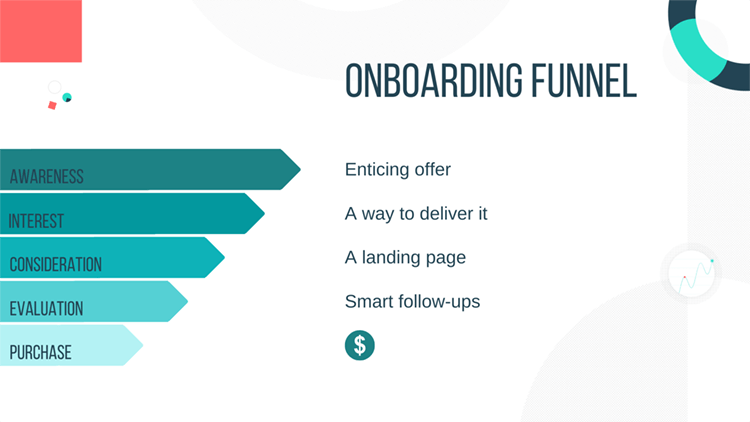
Goal: Learn about your customers
Superpower: Increase interaction rates by sending people relevant content
The sooner you find out what your customers are looking for, the better. A welcome survey is a few questions you ask new customers to assess their specific needs. You can drag & drop a survey in no time.
Keep the questions brief and create a few different final pages: based on the answers you can show a different final page or point to different resources to get people started the right way.
To Construct Onboarding Funnel, You’ll Need:
☑ A Set of Questions That Matter
Each customer is different and must have their different needs met. Finding out what they’re expecting from you will help you provide them with a personalized experience.
☑ A Fun, Quick, Beautiful Survey
Ask your questions beautifully: add gifs, animations and keep it personal by addressing your customers by their first name. Let them skip irrelevant questions and ask follow-up questions when needed.
☑ Curated Content and Touchpoints for Each Segment
Now that you’ve identified what kind of people your customers are, you can group them together. Send each group different content, addressing different problems and suggesting different custom-fit solutions. Some people might benefit from talking to sales, others need more customer support - a welcome survey can help you identify these needs.
Get Started with Customer Onboarding Templates
300+ Mobile Friendly Templates
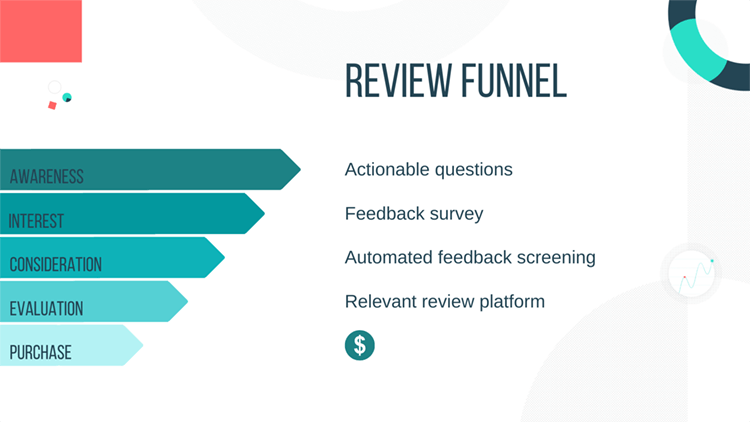
Goal: Get 5-star reviews on autopilot
Superpower: Keep negative feedback for your eyes only, make positive feedback public
Why do your competitors have way more reviews than you? Definitely not because their customers love them more, or just happen to be extremely vocal and public about their praise.
You too can get glowing reviews that just “magically appear on their own”. Let’s lift the mystery veil on review funnels: they’re just smart feedback surveys.
Review funnel surveys ask your whole customer base questions to determine how much they like you, filter out the best ones and invite them to leave a review on a platform of your choice.
To Construct Review Funnel, You’ll Need:
☑ A Set of Questions to Ask Your Customers
“How happy are you on a scale from 1 to 10?” and “How likely are you to recommend us to a friend?” are both solid choices that will help you sort out promoters from detractors.
☑ An Engaging Feedback Survey
Adding an incentive to complete the survey will help you get more responses.
Offer a discount or a freebie to get more feedback.
☑ A Review Platform That Makes a Difference to Your Business
Google reviews make an impact on brick-and-mortar stores, G2Crowd and Capterra are a great option for Software businesses and Trust Pilot is perfect for eCommerce.
Get Started with Review Funnel Templates
300+ Mobile Friendly Templates
7. Limited Time Offer Sales Funnel
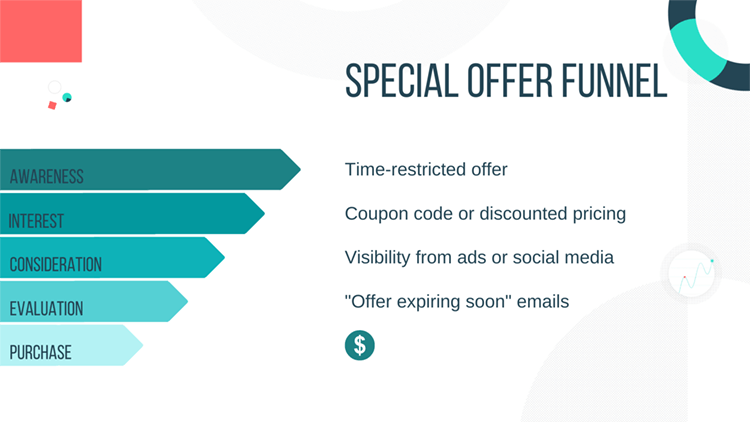
Goal: More sales in a shorter time
Superpower: Turning casual browser into paying customers at a higher rate by creating urgency
There’s a reason Black Friday and Cyber Monday are so successful. Limited time offers create a sense of urgency that pushes for more sales. A limited time offer sales funnel helps create that urgency all throughout the year.
The more personal an offer feels, the more it sells. Paring this funnel with a welcome survey funnel will create an automated sales beast.
To Construct Limited-time Offer Funnel, You’ll Need:
☑ An Enticing Offer That Expires Soon
Offer a 50% discount if people purchase within 2 hours from first visiting your website to incentivize spontaneous purchases. Offer 25% if they purchase over a certain amount within their first week.
☑ A Pricing Page or Coupon Code to Redeem the Offer
You can make a quick landing page with payment collection enabled, or, if you’re more technically apt, you can create a coupon code.
☑ A Paid or Free Way to Distribute Your Offer
This can be an ad, an email, a section on your website. You can even send it out automatically to people who: sign up to your platform but don’t purchase anything for the first 4 days, people who viewed the pricing but clicked away, people who have had products in their cart for over a month...
8. Cancellation Funnel
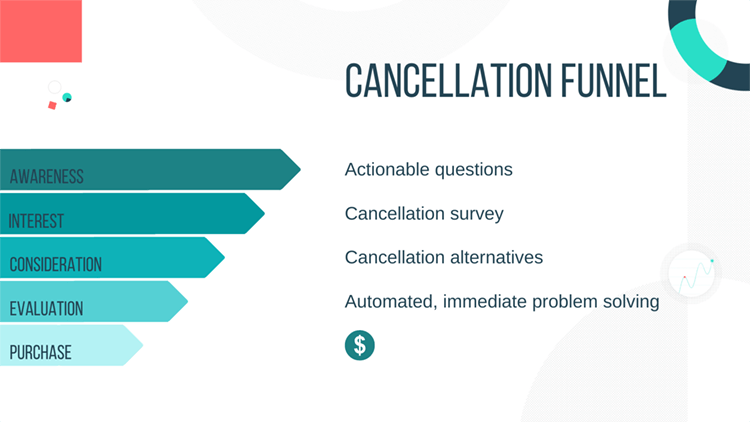
Goal: Lower churn rate
Superpower: Convince people trying to cancel to stay
Churn is the boogieman under every subscription company’s bed. It eats away at your profits every month and trying to combat it with more sales is like bucketing water out of a sinking ship.
How do you lower churn? Many companies create lengthy, slow loading, and ugly exit surveys in hopes to deter people from canceling. But blocking the door doesn’t stop churn - it creates annoyed customers and annoyed customers leave negative reviews.
A good churn funnel is trying to find the root of the problem and potentially solve unhappiness with alternatives to canceling. Maybe your customers just need more help, a small discount, or skip a few months instead of canceling.
Paired with a smart review funnel, a churn funnel will help you identify what causes customers to be unhappy and address it on a company scale level.
To Construct Cancellation Funnel, You’ll Need:
☑ A Set of Questions You Can Draw Actionable Feedback from
Think about what their struggles and challenges are and address them. Try to solve problems - if a customer says they’re struggling, send them to support, if they can’t find a functionality, send them a help article or video tutorial about it.
☑ A Cancellation Survey That’s Not Annoying
Yes, you could make a 30-page slow loading abomination of a survey to deter people from canceling, but simply blocking the exit is not the way. Ask brief honest questions in a human way to get honest, helpful answers.
☑ Cancellation Alternatives
Some clients will pause their subscription instead of canceling if you give them the option to. Others will continue paying if you give them a small discount. Consider offering these options as alternatives to canceling.
Cancellation Funnel Templates That Help You Keep More Customers
100% Customizable, Mobile-Friendly and Brand-Ready
9. Ad Funnel
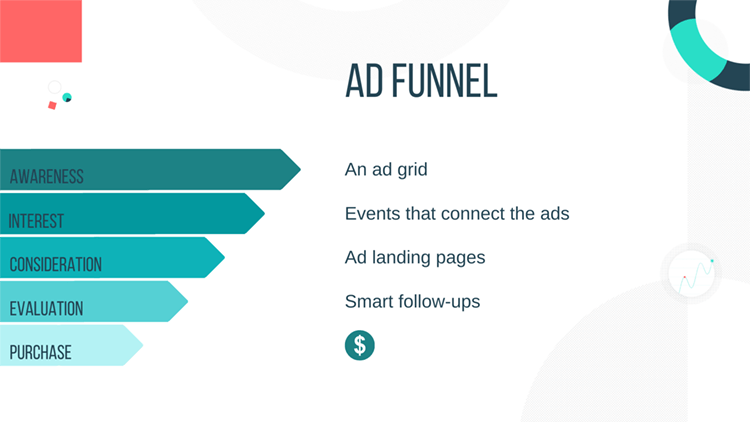
Goal: Get more leads
Superpower: Use your budget smarter to show more relevant ads
This funnel looks more like a grid rather than a funnel when you look at it, but it uses funneling strategies to push leads towards a purchase.
To Construct Ad Funnel, You’ll Need:
☑ A Set of Ads
Make ads for people at different points of their journey. Is this the first time they hear about you? Briefly introduce your best offer. Have they interacted with your previous ads before? Tell them more about what they’re interested in.
☑ Connecting the Ads
If persona A interacts with ad A1, you show them ad A2, then A3 etc. until they complete the goal you have set for them - signing up, downloading something or booking a call. Or if persona A doesn’t interact with ad A1, see if ad B1 gets their attention.
☑ Landing Pages for Your Ads
You can land your ad clicks anywhere - an optimized A/B tested landing page, a brief engaging form, or even a personality quiz. Try staying away from landing people on your homepage - it’s too generic in most cases.
To Sum It All Up
As you could see in the list above, there are plenty types of funnels that you could implement for your business. Each funnel tackles a slightly different goal or presents a way to achieve similar goals by using different methods and ideas. Before implementing any of the funnels, take time to examine your business and understand what goal are you currently trying to achieve. This way you can be laser-focused on the most suitable funnel for your business. By choosing the best-fitting funnel, you can increase the chances that it will actually add value to your business.
involve.me is, in fact, a very powerful funnel builder with tons of customization possibilities. Go ahead, explore our tool and build a highly converting funnel for your business. It's 100% drag and drop so no coding skills are needed!
Try involve.me now -> it's free :)

